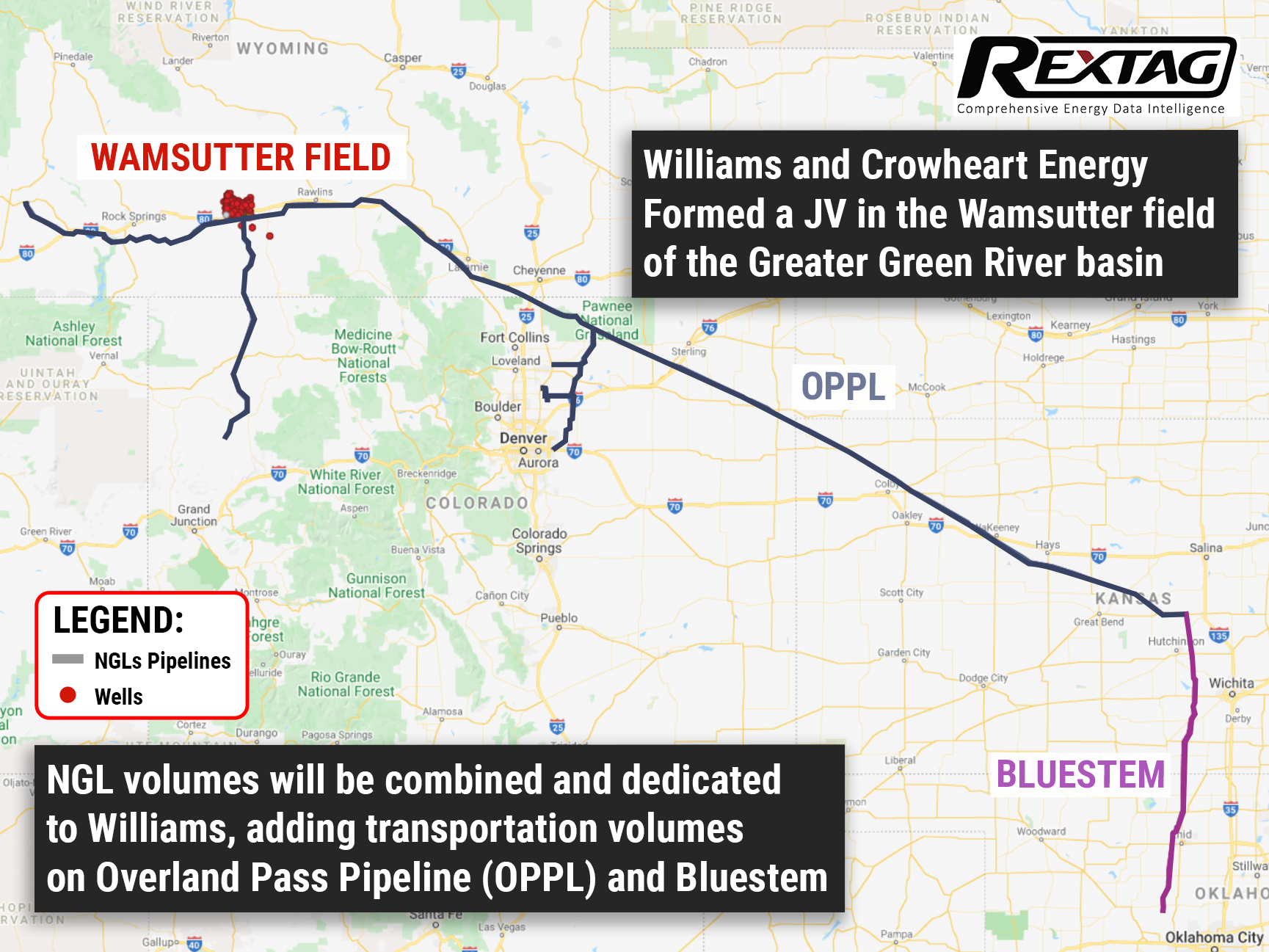Comprehensive Energy Data Intelligence
Information About Energy Companies, Their Assets, Market Deals, Industry Documents and More...
Smart Investments Are The Key To Success: Williams JV Brought Benefits At The End Of The Year
12/09/2021
The Williams Companies, Inc. reported stunning results, surpassing the previous year's third-quarter adjusted EBIDTA by 12% to $153 million. This is a $383 million increase in year-to-date EBIDTA.
The third quarter as a whole was spectacular for midstream companies. Dividend increases and buyback activity highlight management's confidence in their business. For the first time in two years, no midstream index members cut any of their dividends. And The William Cos. is not an exception.
Though the vast majority of the quarter's EBIDTA growth was attributed to production in Wyoming's Greater Green River Basin's Wamsutter Field. In this regard, Williams concluded a joint venture with Denver-based Crowheart Energy in July, in which Crowheart began operating properties owned by BP Plc and Southland.
As part of this upstream joint venture, three legacy assets of BP Plc and Southland were combined with Crowheart Energy's asset base into a contiguous area totaling over 1.2 million net acres.
A JV agreement states that 75% in this collaboration belongs to Williams, while Crowheart got the remaining 25%, although Crowheart may increase its ownership stake through performance for the sake of the development program designed to enhance the value of Williams midstream assets down the road.
Williams saw success in the development of its midstream assets and retained full ownership in the Wamsutter Field's consolidated upstream position under the JV. Furthermore, the company retained real estate, surface, and other rights that will enable it to expand the midstream and renewable energy businesses in Wyoming in the coming years.
Thanks to this agreement, Williams' upstream business contributed $55 million to adjusted EBITDA this quarter alone, since, according to CFO John Chandler, the majority of the production came from Wamsutter's upstream assets. Additionally, net of ownership fees, for the quarter the company earned 232 million CFEs. And they have also benefited from upstream operations of $83 million, almost entirely from the Wamsutter properties.
Analysts expected earnings of $0.28 per share from Williams, but it reported $0.34 per share, while revenue of $2.48 billion, which by itself was a 28.6% increase over the same period in 2020, beat the analyst estimate of $2.09 billion. With a net margin of 10.67% and a return on equity of 10.84%, Williams is poised for success in the fourth quarter as well.
According to president and CEO Alan Armstrong, Williams did not only exceed market expectations this quarter in terms of its financial performance but also continued to successfully execute multiple key projects and transactions that provided the company with a clear path to sustained growth in the foreseeable future.
If you are looking for more information about energy companies, their assets, and energy deals, please, contact our sales office mapping@hartenergy.com, Tel. 619-349-4970 or SCHEDULE A DEMO to learn how Rextag can help you leverage energy data for your business.
The Final Stretch: Energy Transfer Pushes For Mariner East Project Ahead Of The Stunning Q3 Results
![$data['article']['post_image_alt']](https://images2.rextag.com/public/blog/Energy-Transfer-Pushes-For-Mariner-East-Project-Ahead-Of-The-Stunning-Q3-Results .png)
Energy Transfer's lead in the world's NGL exports booked the company another successive quarter. With a global market share of almost 20%, the company is nigh unstoppable. But will it be enough to, finally, push the Mariner East project over the edge? If everything goes as planned, Mariner East's last segment could be operational by the end of the first half of 2022.
No More Gas Flaring: the Permian's Double E Pipeline is brought into service in West Texas
![$data['article']['post_image_alt']](https://images2.rextag.com/public/blog/The-Permians-DoubleE-Pipeline-is-brought-into-service-in-West-Texas.png)
Permian Basins gas infrastructure boom: Summit Midstream puts into service a new pipeline system, aimed at reducing gas flaring in the area. Besides ecological concerns, the project will also transport almost 1,5 billion cubic feet of gas per day — enough to supply 5 million U.S. homes every day. According to Federal Energy Statistics, the project cost a whopping $450 million.
![$data['article']['post_image_alt']](https://images2.rextag.com/public/blog/328_Blog_Why Are Oil Giants Backing Away from Green Energy Exxon Mobil, BP, Shell and more .jpg)
As world leaders gather at the COP29 climate summit, a surprising trend is emerging: some of the biggest oil companies are scaling back their renewable energy efforts. Why? The answer is simple—profits. Fossil fuels deliver higher returns than renewables, reshaping priorities across the energy industry.
![$data['article']['post_image_alt']](https://images2.rextag.com/public/blog/327_Blog_Oil Market Outlook A Year of Growth but Slower Than Before.jpg)
The global oil market is full of potential but also fraught with challenges. Demand and production are climbing to impressive levels, yet prices remain surprisingly low. What’s driving these mixed signals, and what role does the U.S. play?
![$data['article']['post_image_alt']](https://images2.rextag.com/public/blog/326_Blog_USA Estimated Annual Rail CO2 Emissions 2035.jpg)
Shell overturned a landmark court order demanding it cut emissions by nearly half. Is this a victory for Big Oil or just a delay in the climate accountability movement?